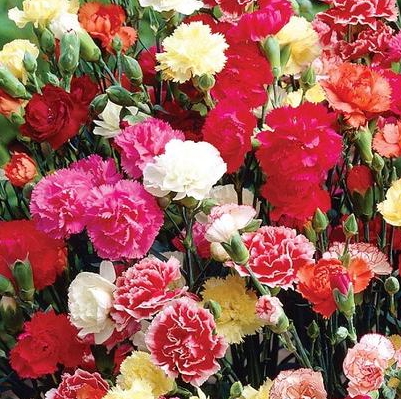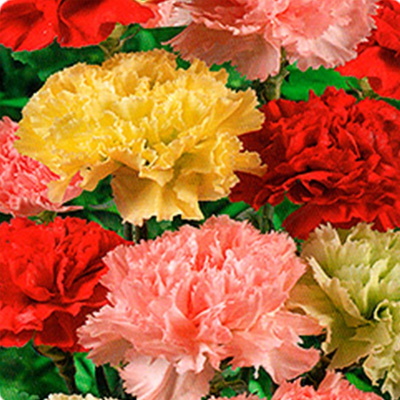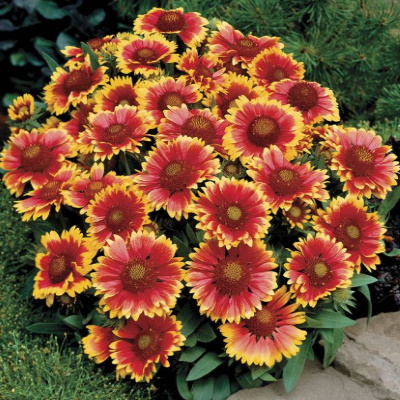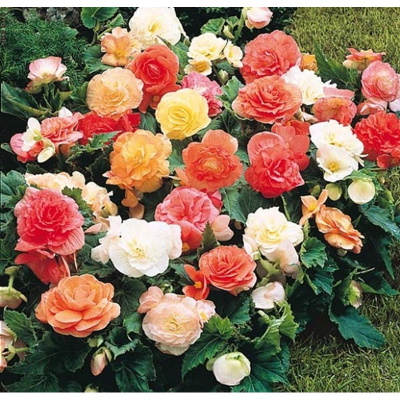-
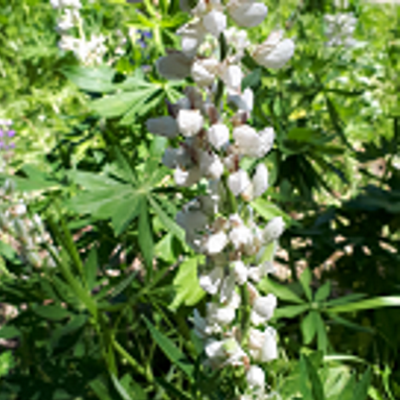
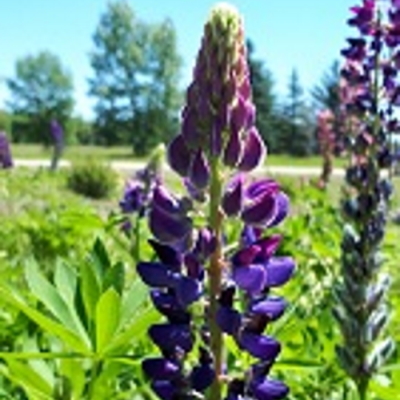 Stunning, brightly-colored spikes create a strong feature in the early summer garden. Its pea-like flowers grow in dense spires. Scatter through cottage or wildflower gardens or mass plant in the border. Purple, deep blue, red, pink, yellow, cream, and white. Lupins prefer a full sun position but will also grow well in semi-shade, they do not grow well in full shade. They grow well in a wide variety of soil conditions although chalky and/or waterlogged soil will be a problem if not improved before planting. If the ground is clay, lots of compost dug into the planting area will greatly increase their chances of surviving winters. Once your Lupins start to flower create new plants if you want more of a certain colour, gently separate the little offset at the base of a mature plant and replant it.
Stunning, brightly-colored spikes create a strong feature in the early summer garden. Its pea-like flowers grow in dense spires. Scatter through cottage or wildflower gardens or mass plant in the border. Purple, deep blue, red, pink, yellow, cream, and white. Lupins prefer a full sun position but will also grow well in semi-shade, they do not grow well in full shade. They grow well in a wide variety of soil conditions although chalky and/or waterlogged soil will be a problem if not improved before planting. If the ground is clay, lots of compost dug into the planting area will greatly increase their chances of surviving winters. Once your Lupins start to flower create new plants if you want more of a certain colour, gently separate the little offset at the base of a mature plant and replant it. -
Out of stock
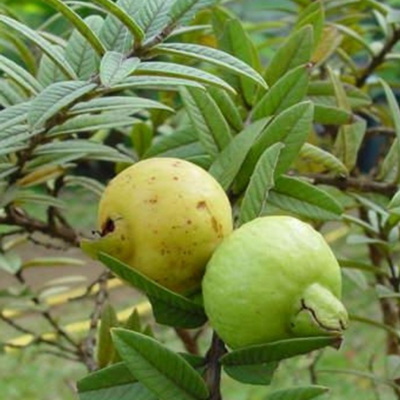 Attractive, frilly flowers mature into guava fruits, which may be round, ovoid, or pear-shaped, 5-10cm (2-4in.) long, and are commonly used in ms and juices. From seed, common guavas may bloom and set fruit in as little as 2 years. The bark is smooth, mottled green or reddish-brown, and peels off in thin flakes to reveal the attractive bony aspect of its trunk. Guavas can bloom throughout the year in mild-winter areas, but the heaviest bloom occurs with the onset of warm weather in the spring. And if the tops of the trees are frozen, they usually sprout from the ground and are back in production in 2-3 years. Can be grown in pots indoor.
Attractive, frilly flowers mature into guava fruits, which may be round, ovoid, or pear-shaped, 5-10cm (2-4in.) long, and are commonly used in ms and juices. From seed, common guavas may bloom and set fruit in as little as 2 years. The bark is smooth, mottled green or reddish-brown, and peels off in thin flakes to reveal the attractive bony aspect of its trunk. Guavas can bloom throughout the year in mild-winter areas, but the heaviest bloom occurs with the onset of warm weather in the spring. And if the tops of the trees are frozen, they usually sprout from the ground and are back in production in 2-3 years. Can be grown in pots indoor. -
-
Out of stock
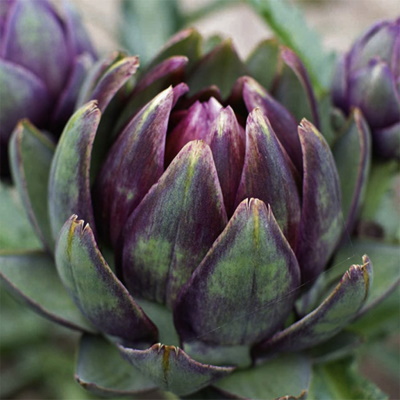 Start seed indoors in a soil-less mix 8-12 weeks before the last frost date in your area. Sow the seed 6 mm (1/4″) deep and germinate at 21-26 C (70-80 F). When seedlings are 2.5-5 cm (1-2″) high transplant to individual 10 cm (4″) pots and grow on at 15-21 C. Harden off and transplant to the garden after the threat of frost has passed. Artichoke does best in full sun with a deep, organic, fertile soil. Space plants 60-90 cm (24-36″) apart in the row with rows 1.75 m (6′) apart. Keep plants evenly watered and mulch the soil to help preserve soil moisture and keep the soil from becoming too warm in summer. If the soil does become too warm, it can trigger a summer dormant period. Start with a thin layer of mulch and build it up to 10 cm (4″) thick as the plants grow.
Start seed indoors in a soil-less mix 8-12 weeks before the last frost date in your area. Sow the seed 6 mm (1/4″) deep and germinate at 21-26 C (70-80 F). When seedlings are 2.5-5 cm (1-2″) high transplant to individual 10 cm (4″) pots and grow on at 15-21 C. Harden off and transplant to the garden after the threat of frost has passed. Artichoke does best in full sun with a deep, organic, fertile soil. Space plants 60-90 cm (24-36″) apart in the row with rows 1.75 m (6′) apart. Keep plants evenly watered and mulch the soil to help preserve soil moisture and keep the soil from becoming too warm in summer. If the soil does become too warm, it can trigger a summer dormant period. Start with a thin layer of mulch and build it up to 10 cm (4″) thick as the plants grow. -
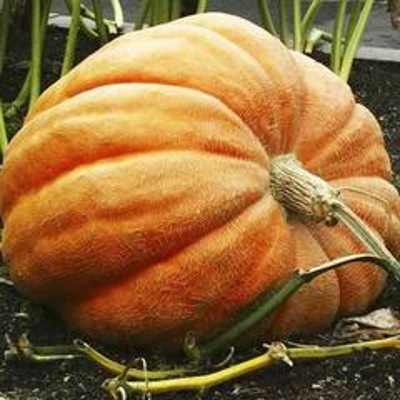 One of the largest varieties of pumpkin in the world, seeds from this and related strains are commonly used in pumpkin weigh-off contests. Fruits regularly grow to 50-100 pounds, and under proper conditions can weigh up to several hundred pounds! For large fruits, grow just one or two per vine. Dill's Atlantic Giant pumpkin seeds hold the world record for giant pumpkins, and produce the largest fruit in the plant kingdom. Bred in eastern Canada by Howard Dill, Atlantic Giant can reach 1,000 lbs or more! The record is 2,624.6 lbs! These giants grow on very large plants, with vines up to 50' long, so they require lots of room, full sun, and fertile soil to produce the giant pumpkins. For the largest size, prepare a growing area 20 x 20 feet, and dig down three feet. Fill this with soil mixed heavily with fully composted chopped straw or rock dust. Apply a balanced organic fertilizer at transplant time, and feed the plant every two weeks with liquid kelp or fish fertilizer. Once the fruit begins to grow, remove all female flowers that follow so that there is only one fruit per plant. Professional growers use a tarp or board beneath the fruit as it develops in order to shift it once it is fully grown.
One of the largest varieties of pumpkin in the world, seeds from this and related strains are commonly used in pumpkin weigh-off contests. Fruits regularly grow to 50-100 pounds, and under proper conditions can weigh up to several hundred pounds! For large fruits, grow just one or two per vine. Dill's Atlantic Giant pumpkin seeds hold the world record for giant pumpkins, and produce the largest fruit in the plant kingdom. Bred in eastern Canada by Howard Dill, Atlantic Giant can reach 1,000 lbs or more! The record is 2,624.6 lbs! These giants grow on very large plants, with vines up to 50' long, so they require lots of room, full sun, and fertile soil to produce the giant pumpkins. For the largest size, prepare a growing area 20 x 20 feet, and dig down three feet. Fill this with soil mixed heavily with fully composted chopped straw or rock dust. Apply a balanced organic fertilizer at transplant time, and feed the plant every two weeks with liquid kelp or fish fertilizer. Once the fruit begins to grow, remove all female flowers that follow so that there is only one fruit per plant. Professional growers use a tarp or board beneath the fruit as it develops in order to shift it once it is fully grown. -
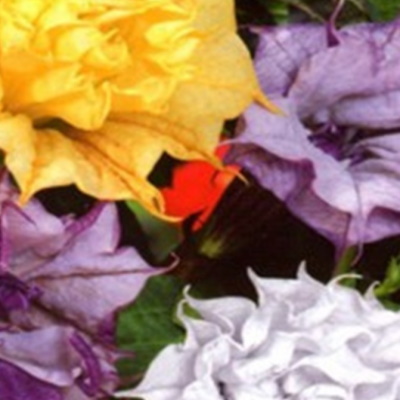 Very ornamental perennial is mostly grown as annual. Grows up to 150cm (60in.) tall, woody stem with large leaves. Fruit - a spherical capsule, covered with spines. Datura flowers are light blue, funnel-shaped, very fragrant, with white rim, up to 20cm (8in.). All parts of Datura plants contain tropane alkaloids (highly poisonous) and may be fatal if ingested by humans or other animals, including livestock and pets.
Very ornamental perennial is mostly grown as annual. Grows up to 150cm (60in.) tall, woody stem with large leaves. Fruit - a spherical capsule, covered with spines. Datura flowers are light blue, funnel-shaped, very fragrant, with white rim, up to 20cm (8in.). All parts of Datura plants contain tropane alkaloids (highly poisonous) and may be fatal if ingested by humans or other animals, including livestock and pets. -
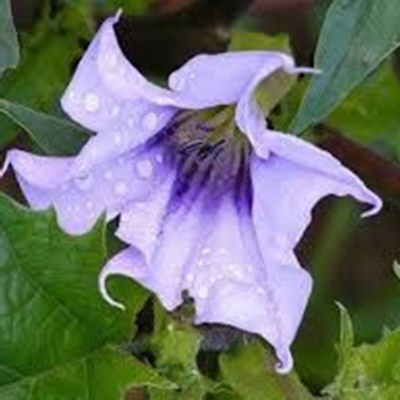 Very ornamental perennial is mostly grown as annual. Grows up to 150cm (60in.) tall, woody stem with large leaves. Fruit - a spherical capsule, covered with spines. Datura flowers are light blue, funnel-shaped, very fragrant, with white rim, up to 20cm (8in.). All parts of Datura plants contain tropane alkaloids (highly poisonous) and may be fatal if ingested by humans or other animals, including livestock and pets.
Very ornamental perennial is mostly grown as annual. Grows up to 150cm (60in.) tall, woody stem with large leaves. Fruit - a spherical capsule, covered with spines. Datura flowers are light blue, funnel-shaped, very fragrant, with white rim, up to 20cm (8in.). All parts of Datura plants contain tropane alkaloids (highly poisonous) and may be fatal if ingested by humans or other animals, including livestock and pets. -
Out of stock
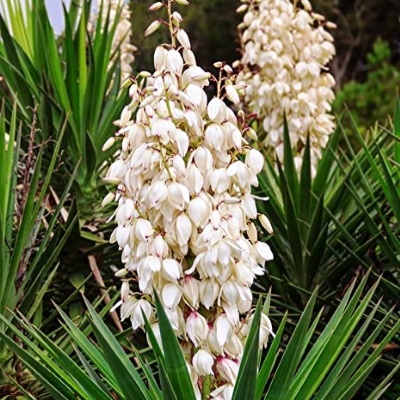 Easily grown in light, dry to medium, well-drained soils in full sun. Tolerant of poor, sandy soils, heat, drought, and salt spray. Surprising tolerance for some part shade. Can be propagated easily from basal offsets.
Easily grown in light, dry to medium, well-drained soils in full sun. Tolerant of poor, sandy soils, heat, drought, and salt spray. Surprising tolerance for some part shade. Can be propagated easily from basal offsets.Noteworthy Characteristics
Yucca filamentosa, commonly called Adam’s needle, Spanish bayonet, yucca and needle palm, is a virtually stemless broadleaf evergreen shrub (though it looks more like a perennial than a shrub) that is native to beaches, sand dunes and fields from South Carolina south to Florida and Mississippi. It has escaped cultivation and extended its original range north into New England. It features a basal rosette of rigid, sword-shaped, spine-tipped green leaves (to 30” long and to 4” wide) with long filamentous (as per specific epithet) curly threads along the margins. Leaves form a foliage clump to 2-3’ tall. In late spring, a flowering stalk rises from the center of each rosette, typically to 5-8’ tall, but infrequently to 12’ tall, bearing a long terminal panicles of nodding bell-shaped creamy white flowers. Fruits are elliptical dehiscent capsules. Will form a small colony over time from basal offsets. Genus name comes from the Carbi name for manihot, also called cassava or yuca, which is not closely related but has similarly enlarged root structures. Specific epithet means with filaments or threads. -
Out of stock
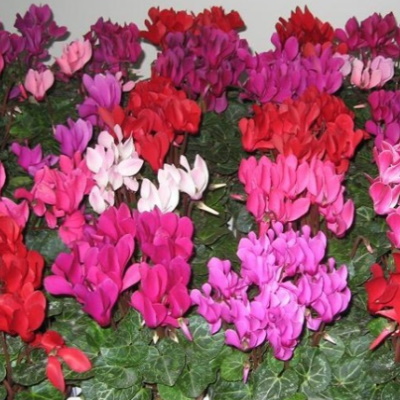 Recommended for windows and greenhouses. Perennial flowering plant grows up 20-30 cm height. Solitary, drooping flowers in a great variety of bright colours. Blooms in the autumn-winter period. During flowering, the plant needs bright diffused light, regular watering, and a temperature between 12-17 C
Recommended for windows and greenhouses. Perennial flowering plant grows up 20-30 cm height. Solitary, drooping flowers in a great variety of bright colours. Blooms in the autumn-winter period. During flowering, the plant needs bright diffused light, regular watering, and a temperature between 12-17 C -
Out of stock
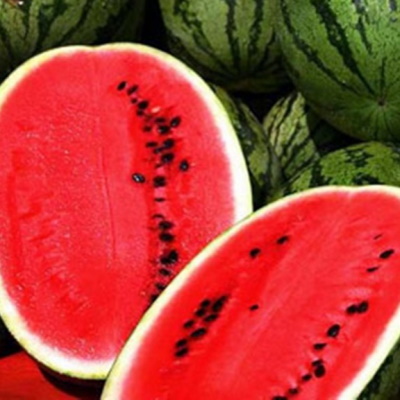 Mid-season variety 78-86 days. Round, smooth, green fruits with a dark green pattern. Very sweet, red, granular, and juicy flesh. Average weight 4.5 kg. Resistant to fusarium wilt and anthracnose.
Mid-season variety 78-86 days. Round, smooth, green fruits with a dark green pattern. Very sweet, red, granular, and juicy flesh. Average weight 4.5 kg. Resistant to fusarium wilt and anthracnose. -
Out of stock
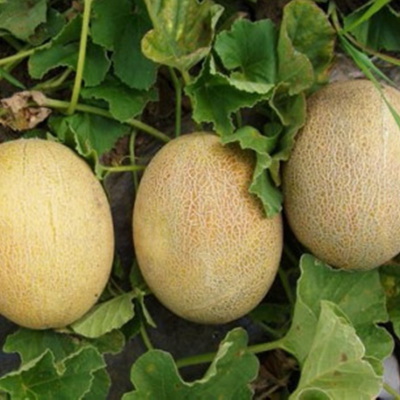 Early maturing variety (65-75 days). Fruits are oval, weight 2-2.5 kg, yellow. The flesh is white, juicy, very sweet, and aromatic.
Early maturing variety (65-75 days). Fruits are oval, weight 2-2.5 kg, yellow. The flesh is white, juicy, very sweet, and aromatic. -
Out of stock
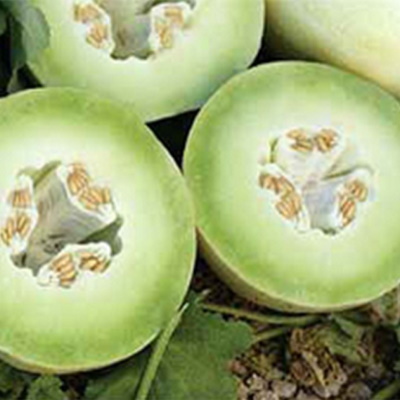 A very old honey melon, known as Honey Dew, originated in Central Asia, was grown in France for a long time, was introduced to the United States in the 1900s, and to China in the 1940s. Melon with a very smooth surface and durable skin, when maturing from pale green to ivory, with gold. The seed chamber is very small. The white-green, juicy flesh has incredible sweetness and a delicious aroma. Melons weighing up to 3 kg (6.5lbs), ripen 65-75 days after germination. Does not crack and is well storable.
A very old honey melon, known as Honey Dew, originated in Central Asia, was grown in France for a long time, was introduced to the United States in the 1900s, and to China in the 1940s. Melon with a very smooth surface and durable skin, when maturing from pale green to ivory, with gold. The seed chamber is very small. The white-green, juicy flesh has incredible sweetness and a delicious aroma. Melons weighing up to 3 kg (6.5lbs), ripen 65-75 days after germination. Does not crack and is well storable. -
Out of stock
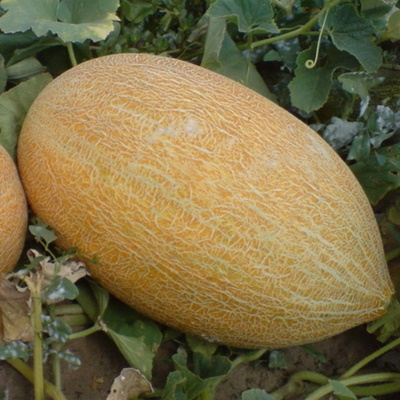 Early variety (70-75days). The fruit is oval, yellow colour, weight 2.1-3.6 kg. Pulp white, sometimes tinged with green near the skin, dense, thick, crispy, tender, sweet, with a strong aroma. The variety is resistant to disease.
Early variety (70-75days). The fruit is oval, yellow colour, weight 2.1-3.6 kg. Pulp white, sometimes tinged with green near the skin, dense, thick, crispy, tender, sweet, with a strong aroma. The variety is resistant to disease. -
Out of stock
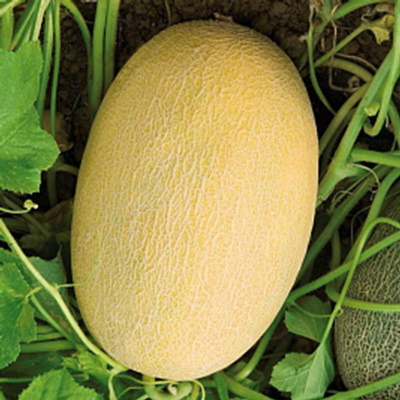 Mid-season (70-80 days) heirloom variety. Elliptical, orange-yellow melons with a large, dense mesh, weight 1.5-3kg. Creamy, thick, tender very juicy, and sweet flesh with an excellent taste. Keeps quality up to 30 days after harvest.
Mid-season (70-80 days) heirloom variety. Elliptical, orange-yellow melons with a large, dense mesh, weight 1.5-3kg. Creamy, thick, tender very juicy, and sweet flesh with an excellent taste. Keeps quality up to 30 days after harvest. -
Out of stock
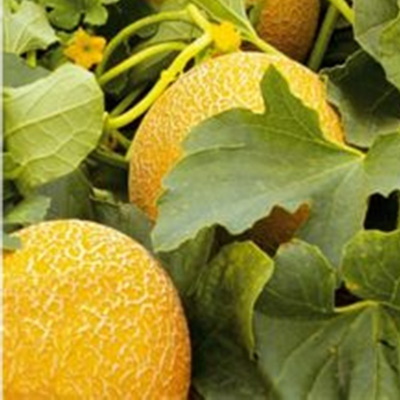 Mid-season (80-85 days) Heirloom variety. Very delicious yellow-orange melons with white, crispy, juicy, and very sweet flesh, weight 2.5-3kg (5.5-6.5 lbs.). Variety has good resistance to diseases. Use fresh.
Mid-season (80-85 days) Heirloom variety. Very delicious yellow-orange melons with white, crispy, juicy, and very sweet flesh, weight 2.5-3kg (5.5-6.5 lbs.). Variety has good resistance to diseases. Use fresh. -
Out of stock
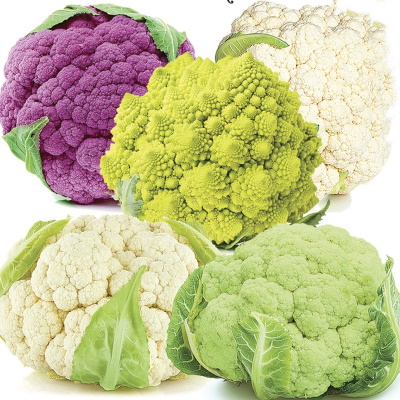 Mid-season variety. Growing period 100-120 days. Rounded head, large, purple-violet, well covered with leaves. Growth up to 1-1.5 kg with a great taste. The variety is resistant to bacterial diseases. It is recommended for cultivation in open field and greenhouses.
Mid-season variety. Growing period 100-120 days. Rounded head, large, purple-violet, well covered with leaves. Growth up to 1-1.5 kg with a great taste. The variety is resistant to bacterial diseases. It is recommended for cultivation in open field and greenhouses. -

Clematis-flowered columbine. Fluffy, star-shaped blooms with pointed, overlapping petals resemble petite clematis flowers. Fully double 3-4 cm upward-facing and nodding, spurless flowers. Blooms late spring of the second year from a spring sowing. An excellent cut flower, it has strong, straight stems and fills the gap between early spring and summer bouquets. Produces multiple blooms per stem. The mix includes Victorian shades in a complementary color palette: rose, almost black, violet, deep wine red, dark purple, white, and purple-edged white. Attracts hummingbirds.
-
Out of stock
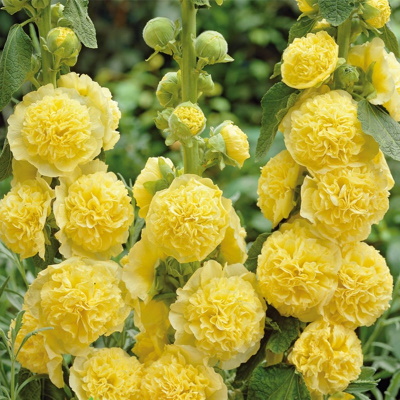 Perennial, grows 150-250cm tall. Large, yellow, double flowers collected in giant inflorescences. Blooms in the second year from July. Use for group plantings, borders, and cutting.
Perennial, grows 150-250cm tall. Large, yellow, double flowers collected in giant inflorescences. Blooms in the second year from July. Use for group plantings, borders, and cutting. -
-
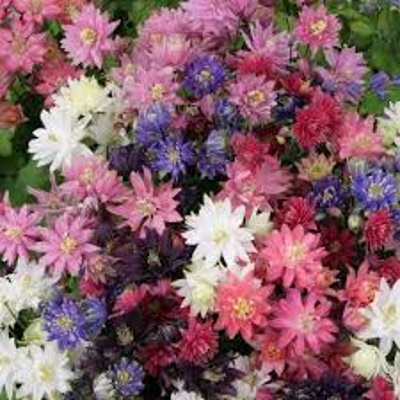
Clematis-flowered columbine. Fluffy, star-shaped blooms with pointed, overlapping petals resemble petite clematis flowers. Fully double 3-4 cm upward-facing and nodding, spurless flowers. Blooms late spring of the second year from a spring sowing. An excellent cut flower, it has strong, straight stems and fills the gap between early spring and summer bouquets. Produces multiple blooms per stem. The mix includes Victorian shades in a complementary color palette: rose, almost black, violet, deep wine red, dark purple, white, and purple-edged white. Attracts hummingbirds.
-
Out of stock
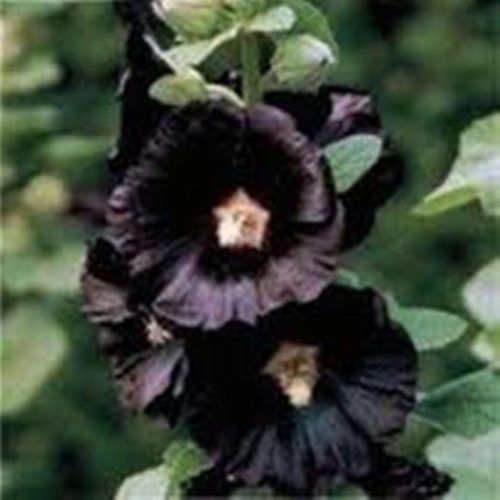 Biennial. This traditional variety is shockingly beautiful and richly coloured with its near-black flowers with just a hint of red. Gorgeous planted in the back of your flower bed or next to white buildings white flowers. A must for historical gardens.
Biennial. This traditional variety is shockingly beautiful and richly coloured with its near-black flowers with just a hint of red. Gorgeous planted in the back of your flower bed or next to white buildings white flowers. A must for historical gardens. -
-
Out of stock
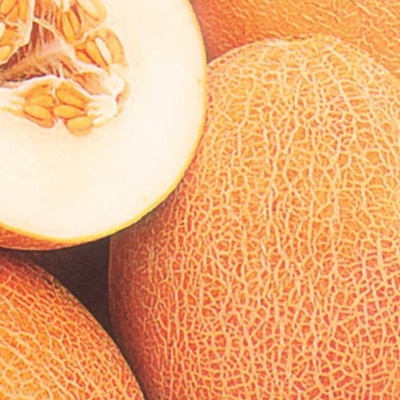 Mid-season (80-90 days) variety. Grows in a powerful plant with oval, yellow-orange fruits, weight 1.5-2.5 kg (3.3-5.5 lbs.) with a large netting. Sweet and juicy, soft, white flesh with an excellent taste.
Mid-season (80-90 days) variety. Grows in a powerful plant with oval, yellow-orange fruits, weight 1.5-2.5 kg (3.3-5.5 lbs.) with a large netting. Sweet and juicy, soft, white flesh with an excellent taste. -
Out of stock
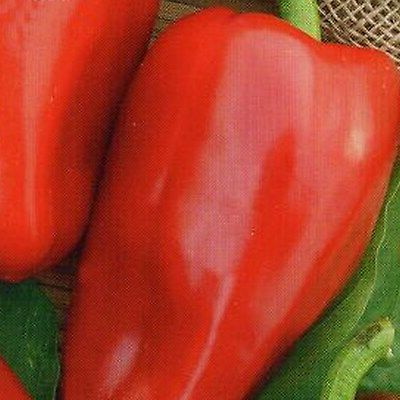 Mid-season (95-110 days) variety for open ground. The plants grow 45-55 cm tall. Smooth, bright red fruits, weight 50-85 grams with an excellent taste.
Mid-season (95-110 days) variety for open ground. The plants grow 45-55 cm tall. Smooth, bright red fruits, weight 50-85 grams with an excellent taste.
